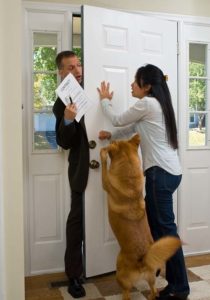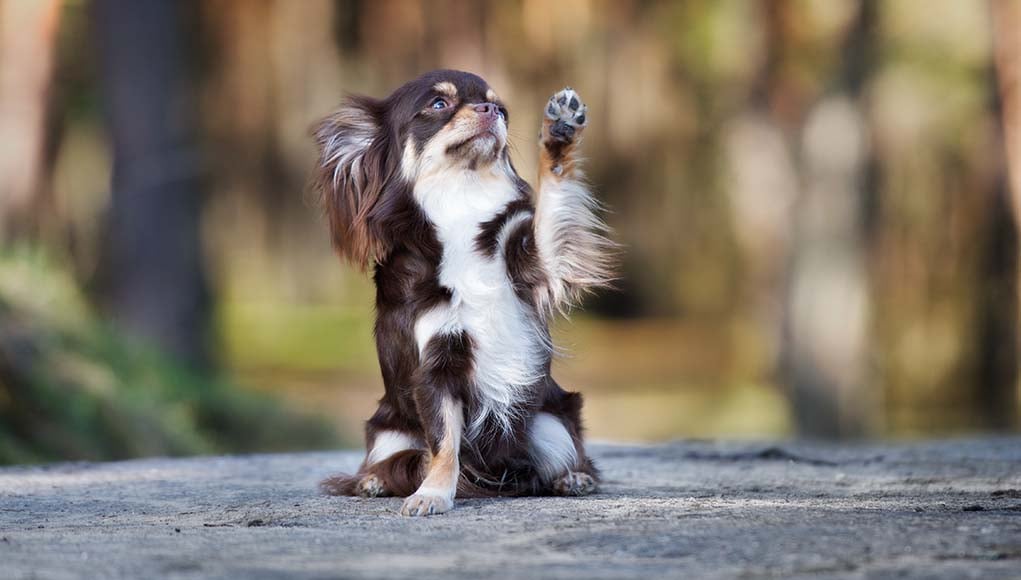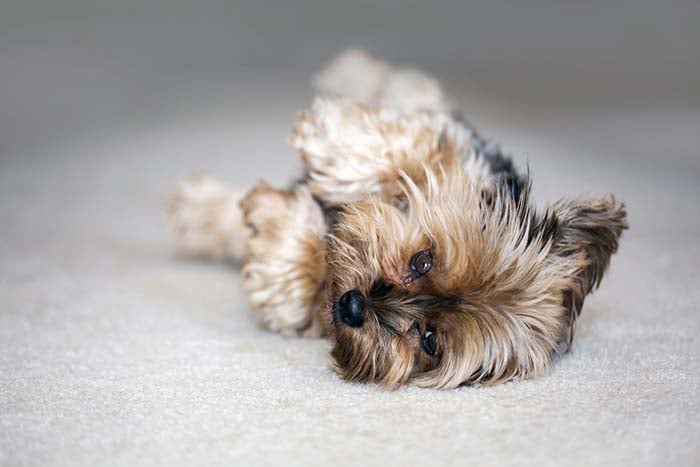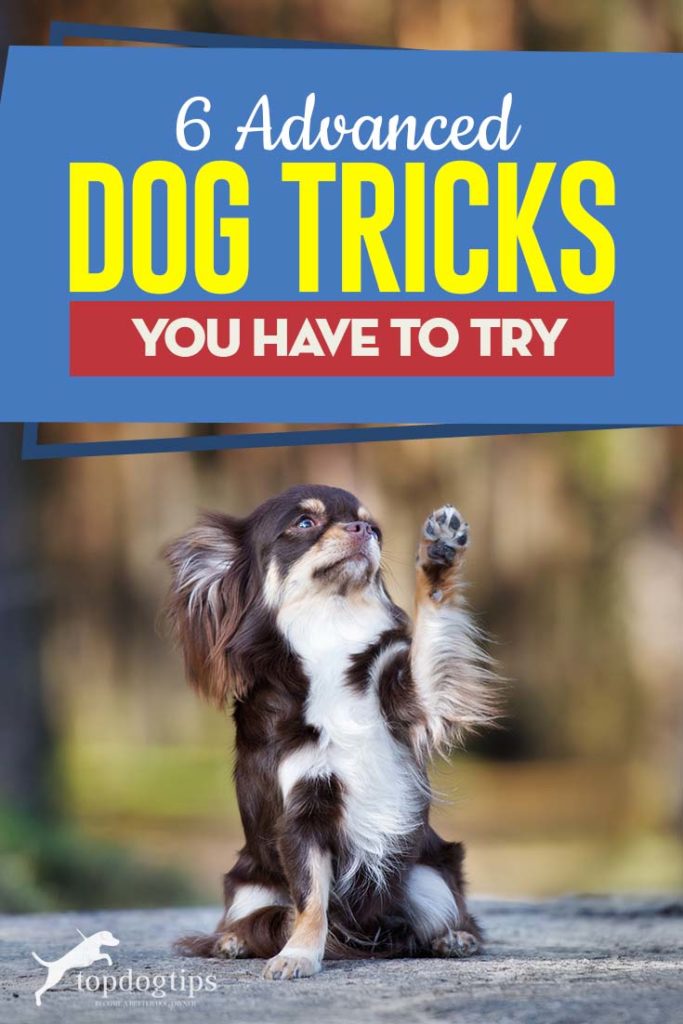Table of Contents
Teaching your dog tricks is a very interesting experience, where you need to use your creativity and try to think like your pet in order to make them do what you want.
While it may be time-consuming and, at certain points, seem futile, it will bring both of you a lot of joy, create necessary mental stimuli for your pet, and deepen your relationship.
So whether for some practical purpose, for a show, or just because it’s cute, teaching them advanced dog tricks is a rewarding experience you should definitely try.
While different to humans when it comes to physique, dogs are mentally similar to us.
An article on Telegraph explains how research confirmed that dogs are intelligent beings, with their brain development quickly reaching that of a two-year-old human.
They can memorize a couple of hundreds of commands or words, and can even be taught to do simple calculations.
A dog's brain functionalities develop in the same way as ours, and the more we try to activate their intellectual skills, the more we will assist in that development.
Having that in mind, the possibilities with our dog are almost limitless. Many dog owners used this knowledge to teach their pets very advanced dog tricks. Here are a few of our favorites.
ALSO READ: 8 Coolest Dog Tricks That You Haven’t Tried Yet
6 Advanced Dog Tricks to Teach Your Dog
1. “Spin Around”
Let’s start with a cool dog trick that is actually easy to teach your dog. While dogs might like to spin chasing their tail, you have to train them properly to do it on command.
Start with a dog in a sitting position. You will put a small treat in your hand, let him sniff the hand, and then make him chase it while going in a circle. The circle has to be big enough to make him stand up and move around, but the hand shouldn’t be too high to make him jump. After each full circle, give praise and treat from your hand.
To look proficient, make him do two or three circles in a row and then give him the treat. When the dog has repeated this several times, make him chase your hand without the food in it, and give the food from your bag when the trick is done.
Add the verbal cue “Spin Around” and limit your hand movement to a shorter one which is not directly above his head and see if he can realize what you want him to do. If he manages to do the spin successfully a few times, stop with the hand movements and give him only the verbal cue.
This is an especially cute trick for small, fluffy dogs. This trick with big dogs and inside of the house can lead to many broken vases.
The performance in the end is very amusing, with your dog spinning around in several circles. Be careful not to ask for too many circles. Even though it looks funny, they can start feeling dizzy.
2. “Waving Goodbye”
Waving goodbye is probably more difficult to teach your dog than, let’s say, giving the paw to say hello. The outcome looks like the paw going from up to down once you wave to him. The trick is usually taught by first teaching your dog to do a high-five.
Dog owners and even professional trainers like to use so-called “clicker” when teaching dogs this trick. A clicker is a noise-making metal cricket which can fit into your fist. If you put the clicker into your hand together with some food you can teach your dog to do a high-five. The dog will approach your hand smelling the food and you will press the clicker at the exact time he touches your hand with his paw.
After each successful high-five, it is important to reinforce the behavior with small amounts of food from your hand. Apart from food, which comes after the successful trick, your dog will start to associate a job well done with a clicking sound. If confused about what is expected of him to do, he will try different things until he hears the clicker, knowing that after clicking comes the food.
Once the dog has learned the high-five trick, it is time to teach him waving goodbye. This is done by distancing your hand a bit from the dog’s paw, so that he has to stretch to touch your hand. Once there is the up and down movement made due to the stretching, it is time to reward that moment by clicking and food.
Repeat this movement many times with your dog, and he will learn to wave goodbye.
3. “Play Dead”
Play dead trick is one of those which dog owners like to perform when they have guests in their house. Having a dog is something we like to brag about, and it is even more emphasized when this dog knows advanced tricks such as this.
In order to learn the trick, you first need to teach him separate commands such as: “Down” or “Rest,” making the dog lie down, and “Roll,” which makes the dog roll to his back or side while in the lying position, and staying in this position for a couple of moments when you say “Stay”.
Teaching him “Down” command is fairly easy so we will go immediately to “Roll”. You can make your dog roll to the side by moving the food around his head slowly and near to the ground. He will follow it with his head and ultimately body. Once you have repeated this with him many times and rewarded him after each successful “Roll”, you can move on to the next step.
Once rolled to the side, repeat the command “Stay,” showing with your hand that he should remain down. If he manages to do that, give him the treat. If not, make him repeat without giving him the treat.
While it might seem harsh to ignore his sad eyes when you refuse to give him a treat, it is important to be careful when you are offering him a reward in order to avoid confusion.
After he has repeated all commands separately but in this order, try putting them together into an advanced trick of playing dead and using only one verbal command instead of three.
4. “Cover Eyes”
As easy as it might seem, it is quite a complex trick to teach your dog to cover his eyes on command.
Use something which you can stick to his nose, such as a sticky note or a piece of duct tape. He will try to take it off the nose. This is the time when you start rewarding him and using the clicker or praises such as “good boy”. The important thing is to guide the dog’s movements. The closer he gets to his eyes with his paws, the bigger the reward should be.
When the dog masters this part, instead of putting real tape on his nose, slightly touch it with your hand as if you were putting the tape and turn the clicking sound into a verbal command such as “Cover Eyes.”
If he doesn’t get it immediately, don’t get mad or impatient. Simply go back to the tape/clicker phase and try using the command at a later stage.
If the dog gets nervous at any point, take a break. He should not associate the training activities with frustration but with praise and reward. If you learn when he needs a break, he will be more productive in the future, and you will be able to teach him many complex tricks.
5. “Hug Me!”
Teaching your pup to hug you is a very interesting advanced dog trick that will provide comfort for you and them in the years to come. It consists of two parts, and the final outcome should be the dog falling onto your arms when you spread them.
Basically, what you need to do first is teach your dog to raise his paws up while in a sitting position. Getting him to sit is usually a fairly easy task. You will teach him to raise his paws by putting the food over his head while he sits. He will try to catch it, and you will give him the food once he catches it without standing up. You can try putting your hand on the lower part of the back by signaling to him that he should not fully stand up in order to do that.
After a successful movement, use the clicker or praises as a vocal signal that he has done something good. When you have repeated this part for several times, it’s time to for a hug. After your dog raises his paws to reach the food, you hug him and let his paws fall onto your arms after reaching the food. In order to hug the dog, you need to have a trusting relationship, and he should be used to your body pressure.
Add a verbal cue such as “Hug me!”, and repeat this couple of times with food above his head, but give him the treat only after a full hug has been performed. After a while, try using only the cue without food and see if he will be able to find his way around.
If your dog is big, teach him to hug you by placing both his paws on one of your shoulders and slightly to the side to avoid unintentional scratching.
6. “Close the Door”
 This is a very time-consuming advanced dog trick to teach your pooch, but the outcome is a very practical and useful maneuver. All of us are sometimes too lazy or busy to close the door which has been left open and if you teach your dog this trick, he will be able to close the door for you.
This is a very time-consuming advanced dog trick to teach your pooch, but the outcome is a very practical and useful maneuver. All of us are sometimes too lazy or busy to close the door which has been left open and if you teach your dog this trick, he will be able to close the door for you.
Prepare a duct tape or a sticky note. Put it in front of your dog and make him come closer to it and sniff it. Once he has done it, use the praise or clicker and give him a tasty reward. Repeat this exercise by moving the sticky note to different sides and distancing it. When your dog consistently does this many times and understands that touching the sticky note brings the reward, put it closer and closer to the door.
Add a verbal cue before putting out a sticky note such as “Close the Door”. Put a sticky note onto the open door instead of holding it with your hand and use just the verbal cue or simply point to the note with your finger. Whenever your dog pushes the open door towards closing it, give him the reward.
At later stages, leave him pushing the door until they are closed and only when the full trick is done give him the reward. You can also try removing the sticky note by making it smaller bit by bit until it fully disappears and the dog knows what to do when there is no visual marker.
In Conclusion
Teaching your pooch some of these advanced dog tricks is based on mutual trust and patience. Dogs are very intelligent beings, and with the right tactics and rewards, you can teach them almost anything. Remember that it is not a race, and different dogs will need a different amount of time to learn something.
While basic dog commands are much easier and quicker to learn for animals, when it comes to advanced dog tricks, it's important to break them down into several separate commands which will be taught separately, and only then be put together.
READ NEXT: 10 Psychological Dog Training Tricks
Pin and share with other dog owners:



















